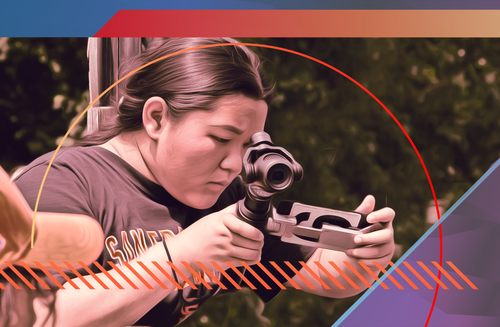
StoryMaker is designed for educators to guide your students to produce high-quality visual and audio content; that includes podcasts, and visual stories for all types of platforms, including YouTube, Instagram and TikTok. Find out what formats excite your students. StoryMaker includes guides and tools for quick content creation challenges, video diaries, podcasting, creating video news stories and mini-docs. If you don't see something you're looking for, please let us know via the contact link.
Historical inquiry is based on materials left from the past that can be studied and analyzed. (NCSS D2.His.9.9-12 - D2.His.13.9-12)
Civics teaches the principles—such as adherence to the social contract, consent of the governed, limited government, legitimate authority, federalism, and separation of powers—that are meant to guide official institutions such as legislatures, courts, and government agencies. (NCSS D2.Civ.7.9-12 - D2.Civ.10.9-12)
Determine the kinds of sources that will be helpful in answering compelling and supporting questions, taking into consideration multiple points of view represented in the sources, the types of sources available, and the potential uses of the sources. (NCSS D1.5.9-12)
Explain points of agreement and disagreement experts have about interpretations and applications of disciplinary concepts and ideas associated with a supporting question and explain how supporting questions contribute to an inquiry and how, through engaging source work, new compelling and supporting questions emerge. (NCSS D1.3.9-12 - D1.4.9-12)
Whether students are constructing opinions, explanation, or arguments, they will gather information from a variety of sources and evaluate the relevance of that information. (NCSS D3.1.9-12 - D3.2.9-12)
Explain how a question reflects an enduring issue in the field and explain points of agreement and disagreement experts have about interpretations and applications of disciplinary concepts and ideas associated with a compelling question. (NCSS D1.1.9-12 - D1.2.9-12)
Students communicate clearly and express themselves creatively for a variety of purposes using the platforms, tools, styles, formats and digital media appropriate to their goals. (ISTE)
Historical understanding requires recognizing this multiplicity of points of view in the past, which makes it important to seek out a range of sources on any historical question rather than simply use those that are easiest to find. It also requires recognizing that perspectives change over time, so that historical understanding requires developing a sense of empathy with people in the past whose perspectives might be very different from those of today. (NCSS D2.His.4.9-12 - D2.His.8.9-12)
Journalism
Video Production
Podcasting
STEM
Getting Started Goals
Lessons
Beginner
Intermediate
Advanced
White board, chalkboard or other visual board
Internet
Notebook
Variable